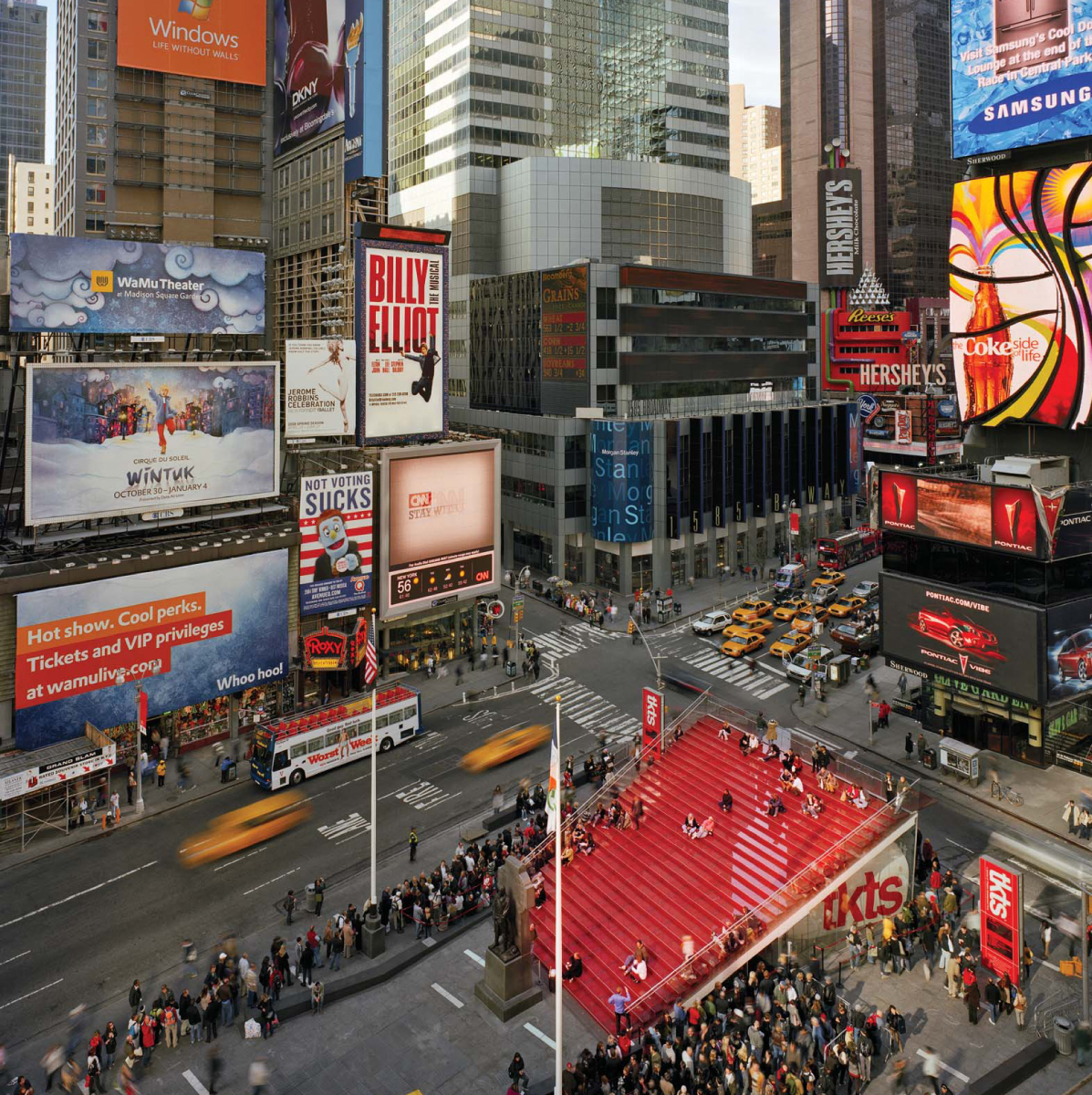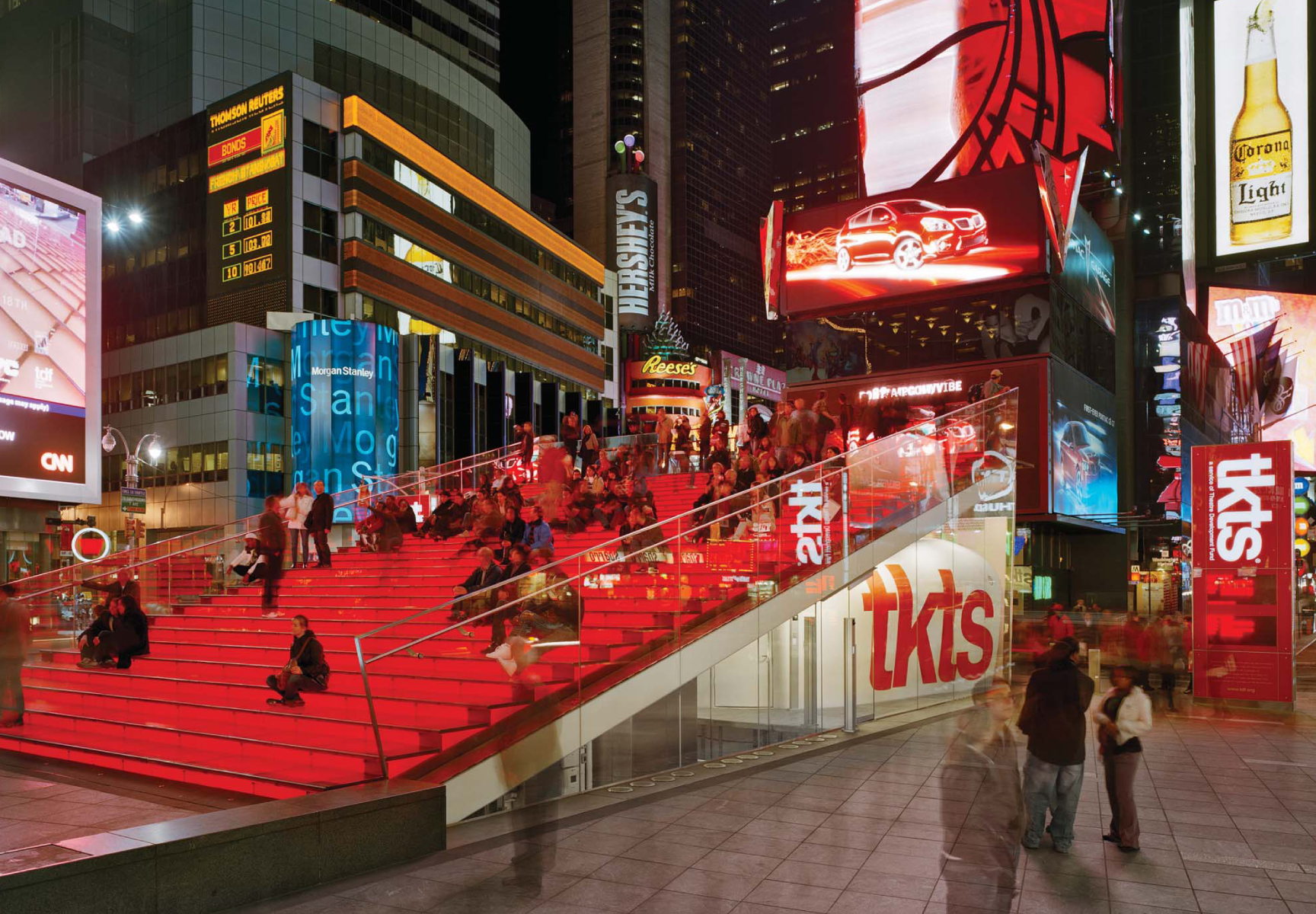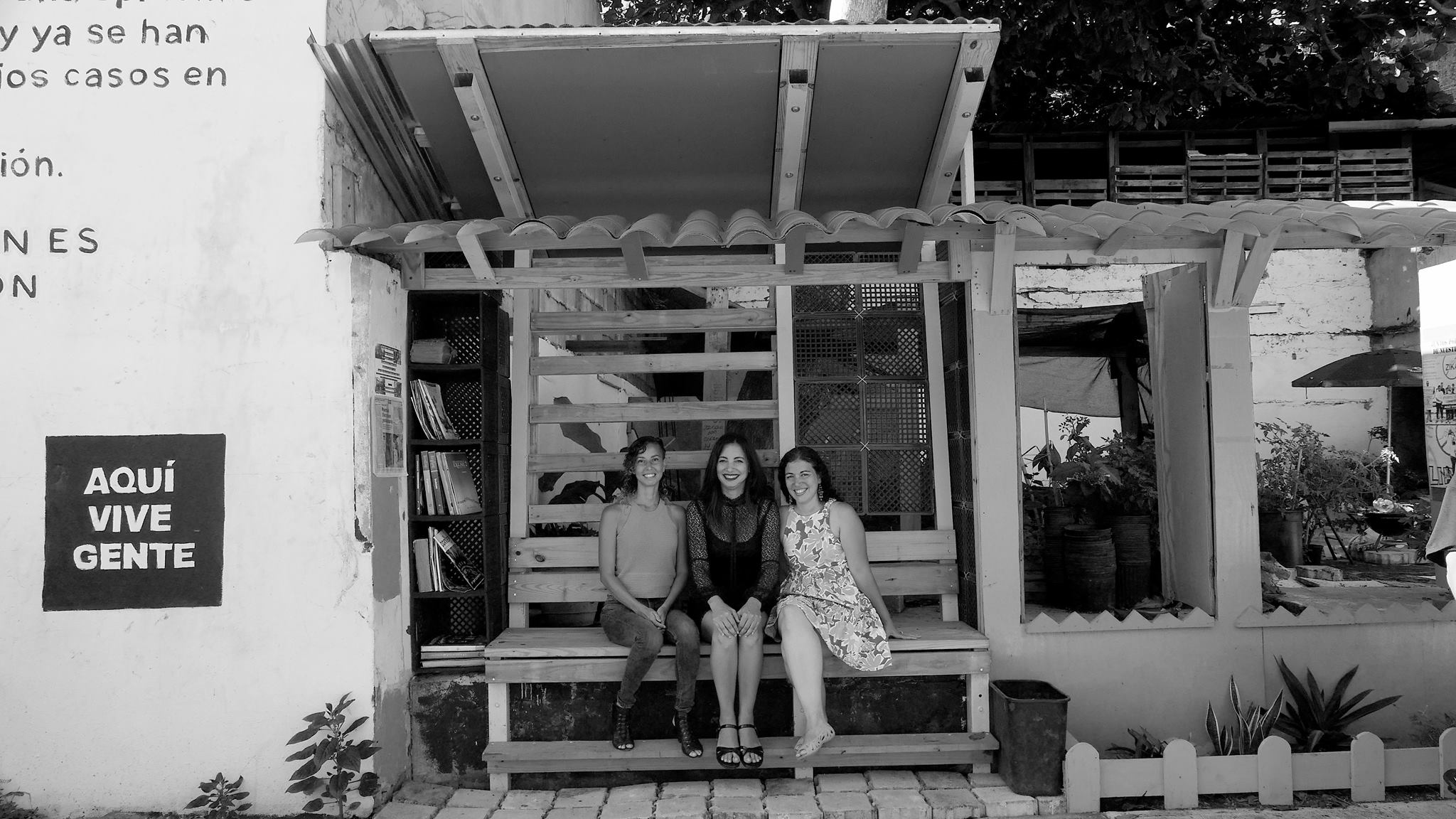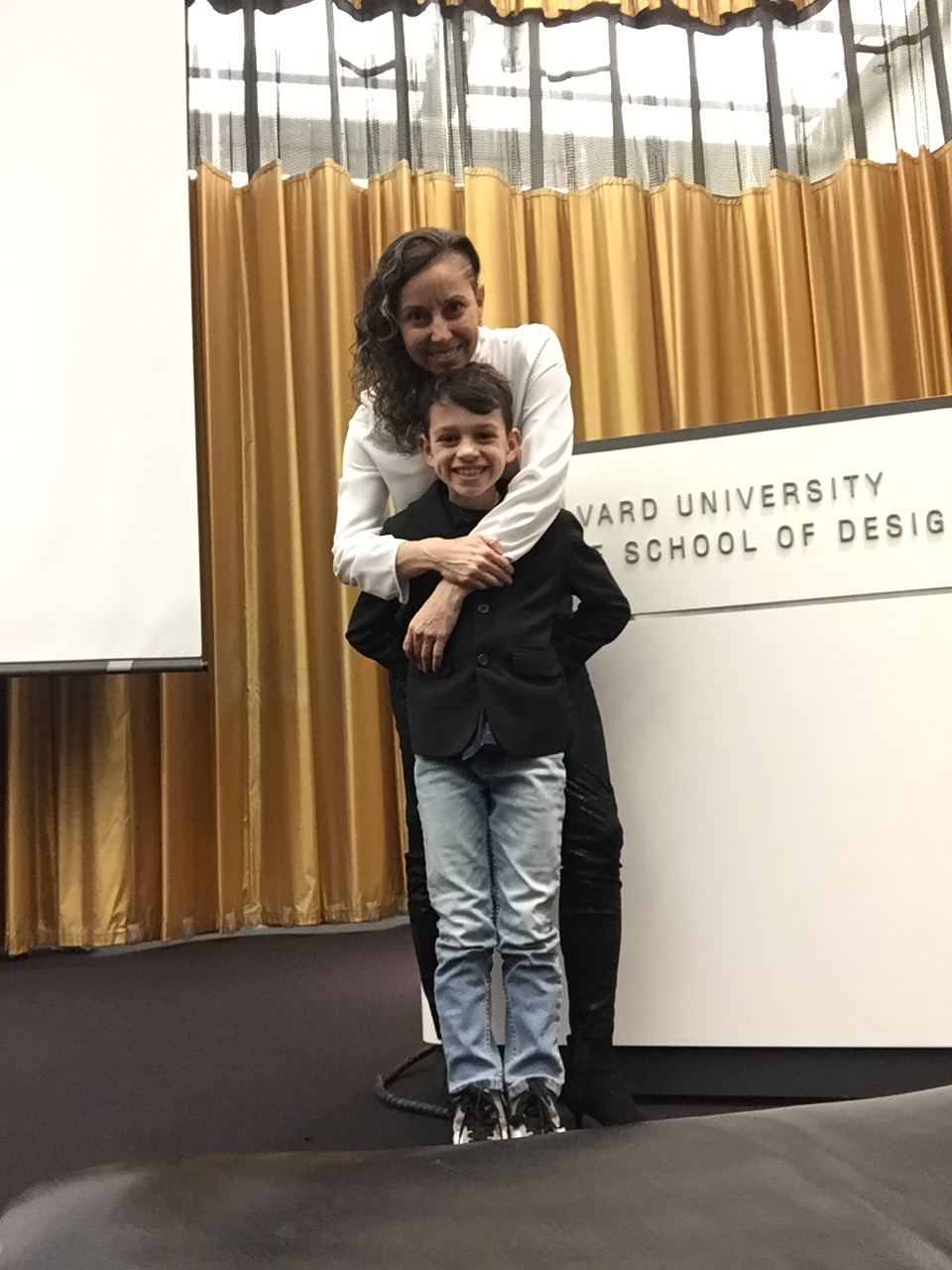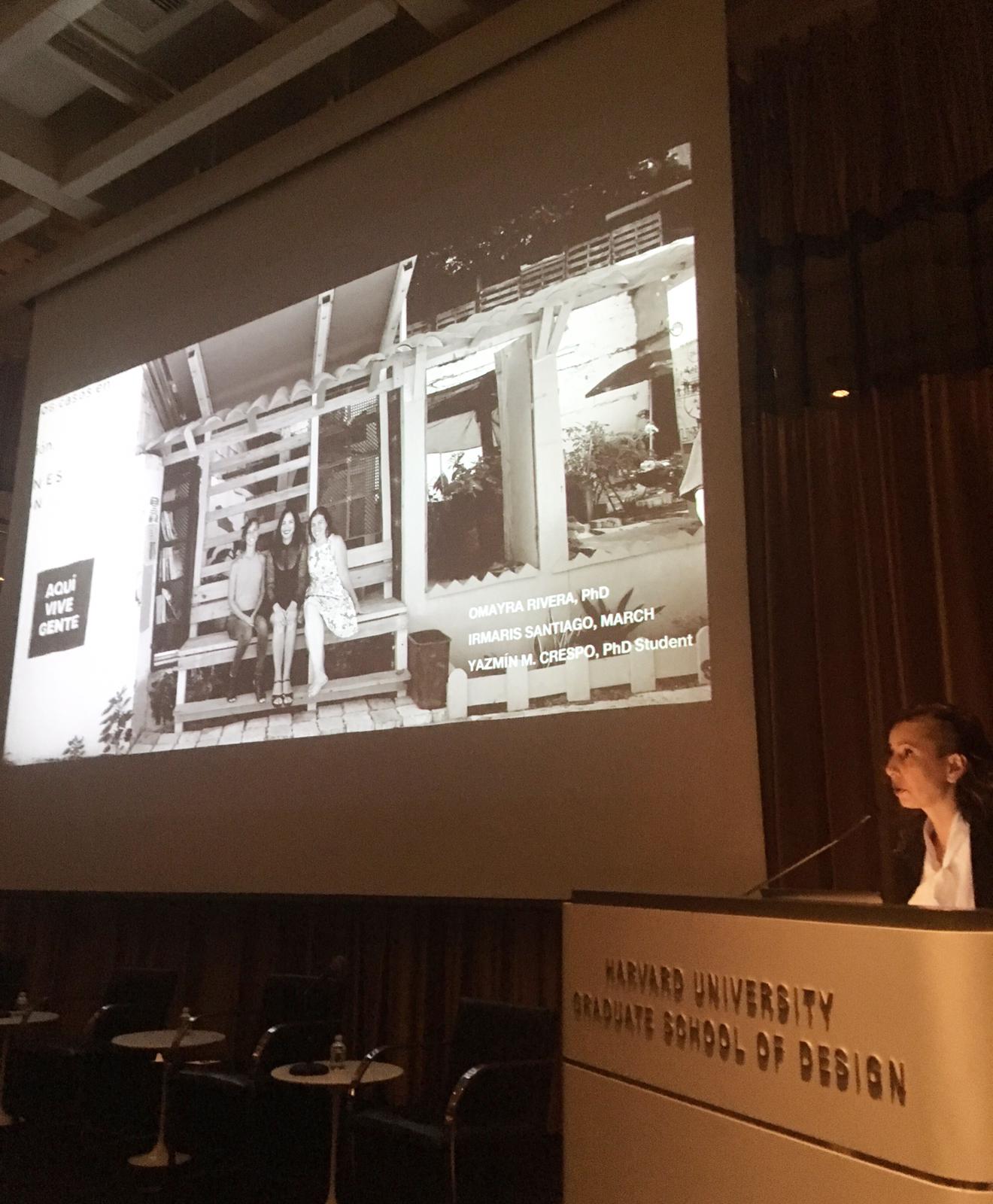Honest Acts: Yazmín Crespo on Facilitating the Agency of Architecture
By Julia Gamolina and Caitlin Dashiell
Yazmín Crespo is a PhD student in architecture at Harvard University’s Graduate School of Design and co-founder of Taller Creando Sin Encargos, a design collective that has developed several design-build workshops titled Arquitecturas Colectivas in communities of Puerto Rico. She is also an Associate Professor of Architecture and former director of the department of Architecture (2014-2018) at the Escuela Internacional de Diseño y Arquitectura where she teaches architecture studios, visual thinking and communication, and history and theory courses. Yazmín has taught at NYIT, Cornell, Universidad Politécnica de Puerto Rico, Universidad de Puerto Rico, Design Discovery at Harvard GSD, and was a Visiting Professor at the Elisava Escola Universitària de Disseny i Enginyeria de Barcelona.
Yazmín holds the Master in Design Studies (MDes) in History and Theory of Architecture from Harvard University’s Graduate School of Design, the Master of Architecture (MArch) and the Bachelor of Architecture (BArch) from Cornell University’s College of Architecture, Art and Planning, and the Bachelor in Environmental Design (BED) from the Universidad de Puerto Rico’s School of Architecture. In her interview, Yazmín talks about her work and initiatives in Puerto Rico and applying to Harvard in the aftermath of Hurricane Maria, advising young architects to observe, write, draw, and in general, to engage various methods to communicate architecture’s agency.
JG: How did your interest in architecture first develop?
YC: Architecture inched into me slowly as a result of life experiences and reflections, meandering through memories, scenarios, and stories that originated from experiencing space.
I received my first education at the Universidad de Puerto Rico School of Architecture (UPR), where I completed Bachelor’s Degree in Environmental Design. At the time, Puerto Rico was in political turmoil: after the huelgas - the strikes - of the 1990s, I developed a project for my first design studio aimed at reintroducing students to our sense of space and community. Looking back, I can say that this experience set my foundation in architecture.
“I aim to practice architecture as an honest act, encouraging observation, solidarity, and action.”
What did you learn about yourself in architecture school?
During my initial studies at the UPR, I developed an appreciation for experience through a meticulous study of the section. Along with the technical skills I gained there, came a passion for drawing and a thirst to apprehend the foundations of architecture.
These tools were carried on to my studies at Cornell University, where I delved into the realm of collage. This technique allowed for broader experimentation and introduced a certain poetry to my process - a way to engage language as an alternative path to conventional architectural territory. With this broader lens, I then engaged the issue of context during my Masters at Harvard. I was able to conceive context not only as the context of building, but also as the text; the textures of architecture as registers of memory.
How did you get your start in the field?
Immediately after I graduated from Cornell, I moved to New York to work at Perkins Eastman (PE) with Nick Leahy. I knew I wanted to work for an office first and also knew I wanted to work in a culture that sees the building as something that is encountered, confronted, and related to one’s body. Nick believed that design was a co-creative process, and architecture, a team effort.
The projects that jump-started my career as an associate designer were the design and construction of the TKTS Booth in Times Square, the international design competition entry for the Shanghai World Expo Public Events Center, and the design and architecture school Sheila Johnson Design Center in Morrisville, NY. In 2005, while still working at PE, I began teaching at night at the New York Institute of Technology. I always saw myself as a designer and professor, and those first experiences in the field helped me understand that I would also always be a student too.
TKTS Booth in Times Square, courtesy of Yazmín Crespo
TKTS Booth in Times Square, courtesy of Yazmín Crespo
Tell me about teaching.
I actually taught my first architecture studio at Cornell University, in 2000. It was an exploration that led me to a new creative setting; a more precise relationship between thinking and building, and a new kind of academic engagement.
After Cornell, I embarked on a teaching tour to various architecture and design schools. At the School of Architecture and Design at the New York Institute of Technology, I developed and taught an elective course called Fram[e]ing Architecture + Film. The course was the result of my learning experience during my Masters at Harvard in 2005. There, I worked as a research assistant for Professor Michael Hays and attended film theory courses with Professor Giuliana Bruno. Emphasizing the importance of theory and film analysis, Hays and Bruno enriched my understanding of the experience of architecture being much like film. Build-making is similar to film-making; there is an emphasis in the passing of time and the narrative of space - the creation of space imbricated and enmeshed with power structures and cultural constructs.
Yazmín with her students in Puerto Rico.
Where are you in your career today?
I see now that my career is shaped as an architectural ensemble, with an unusual way of being entered and exited. It is here, now, as an architecture PhD student at Harvard University Graduate School of Design, that I aim to explore architecture pedagogies. I also am an Associate Professor of Architecture at the Escuela Internacional de Diseño y Arquitectura, UAGM, where I teach architecture studios, visual thinking and communication, and history and theory courses.
In 2012, my involvement in design activism and design-build projects with architecture students led me to co-found the taller Creando Sin Encargos, tCSE with Dr. Omayra Rivera and Irmaris Santiago, a design collective based in San Juan, Puerto Rico. We research, construct, and support architecture that promotes equity in all scenarios. Every two years, we organize design-build workshops titled Arquitecturas Colectivas in communities of Puerto Rico. Together, we remind students that architecture is a way of thinking and that behind every architectural object we encounter, there are processes, images, texts, drawings, and words to be added to unfinished cartographies.
Yazmín and her Taller Creando Sin Encargos co-founders.
One of the first things I learned about you was that you are a single mom. Tell me about this.
Yes, I’m a single mother and the head of my small family. I can tell you, motherhood has not slowed me down. I felt overwhelmed in the beginning, so early on I decided to remain positive and to include my son in everything. I bring my son everywhere on conferences, design-build workshops, community meetings, and to classes and the library when I need to.
He sees me taking on many different responsibilities in life and thriving, and that is important to me. I have come to realize that motherhood is a learning process that we go through daily. Our travesía [crossing] will transform our experiences into a geography of encounters. They will become an integral part of our “lived” experience.
Yazmín and Gabriel after a GSD lecture.
Yazmín and Gabriel at the GSD.
Looking back at it all, what have been the biggest challenges?
Applying to the PhD program. In September 2017, when I was in the midst of preparing my application, Puerto Rico was hit by one of the deadliest hurricanes ever recorded. Our lives were irrevocably altered. We had no electricity and were without running water for months. I remember sending emails using a car battery as a power source at one point. I was determined to apply.
In addition, it was a challenge gathering the courage to leave Puerto Rico, especially while in the middle of a rich career and as a single mom. My family lifts me up!
“I wish I knew just how powerful writing can be as a method of design. Writing enables the employment of observation; when applied fearlessly, it facilitates the agency of architecture.”
What have been the highlights?
Throughout years of teaching, alongside design work, I value two different teaching experiences. In 2012, I was a visiting professor at the Elisava Escola Universitària de Disseny i Enginyeria de Barcelona. I taught history and theory of architecture and was able to take my students to buildings that we only get to see in photos or film. Then, in 2015, I was invited to be one of the instructors for the 30th Encuentro Latinoamericano de Estudiantes de Arquitectura, ELEA in Arequipa, Perú. This experience was about thinking, designing, and writing together a new proposal for the Mercado San Camilo located in the historical center of the city.
In addition, I participated as guest Speaker at Harvard University GSD Symposium “Informal Means” highlighting Latin American and Latinx expertise in contemporary social impact design projects. The symposium presented strategic, participatory, and sustainable endeavors working alongside communities and in collaboration with interdisciplinary teams. I was honored to speak spatially about informal means in Puerto Rico, and to present the work we do at the taller Creando Sin Encargos.
One of the most significant moments was displaying our practice taller Creando Sin Encargos, tCSE at the 2018 Women in Design conference “A Convergence at the Confluence of Power, Identity, and Design” at Harvard GSD. It was extraordinary to gather with faculty, students and practitioners working to raise the visibility of female-identifying designers.
Yazmín presenting at the GSD.
Who in the industry do you admire and why?
Professor Mary N. Woods has had a strong influence on my worldview, and her lessons have been many. Her passion for the histories of women’s practices, for pedagogy, was very contagious. She helped me understand architecture and building as social and collaborative acts with radical socio-political dimensions. Her approach encouraged me, a minority student, to overthrow barriers in a field still perceived as a “white gentlemen’s profession.” She taught me that is okay to be a distinct voice.
What is the impact you’d like to have on the world?
I aim to practice architecture as an honest act, encouraging observation, solidarity, and action. This applies both to my practice as a designer, and as a professor. Hopefully some of this inspires students to look at how design and architecture can have agency in the ideation and construction of spaces - how architecture frames human encounters and provides sites for empathy and understanding.
“I can tell you, motherhood has not slowed me down...I bring my son everywhere...He sees me taking on many different responsibilities in life and thriving, and that is important to me.”
What do you wish you knew when starting out that you know now?
I wish I knew just how powerful writing can be as a method of design. Writing enables the employment of observation; when applied fearlessly, it facilitates the agency of architecture. I am, at heart, a fighter. Architecture requires the designer/author to be tactical, tough, and forward thinking. Writing helps to facilitate all of that.
Finally, what advice do you have for those starting their career?
You may have setbacks, but you are not done when you do. Participate. Work on your community. Cultivate situated knowledges. Think differently and seek colleagues with varying perspectives. Observe, write, draw, question, and remember there are all kinds of ways of teaching, making and unmaking architecture.
This interview has been edited and condensed for clarity.

